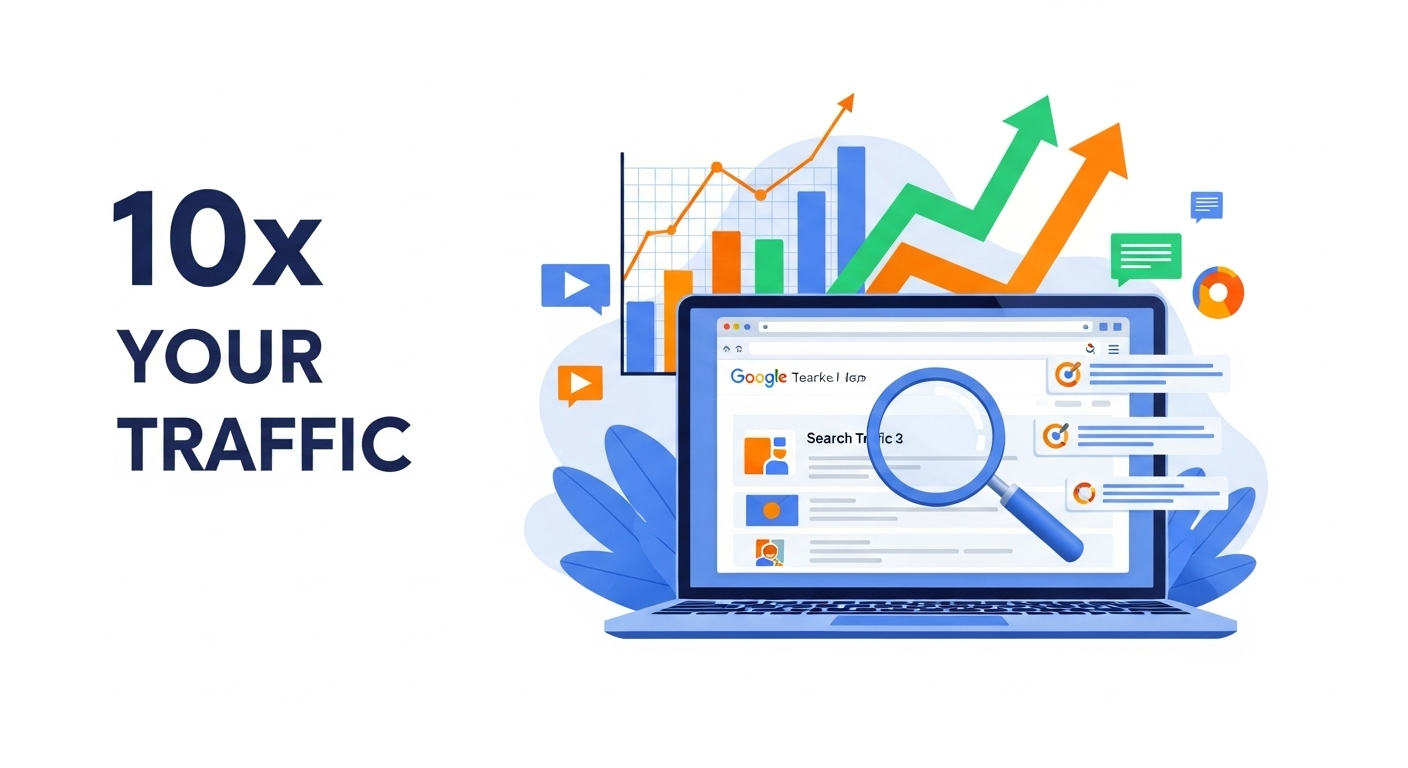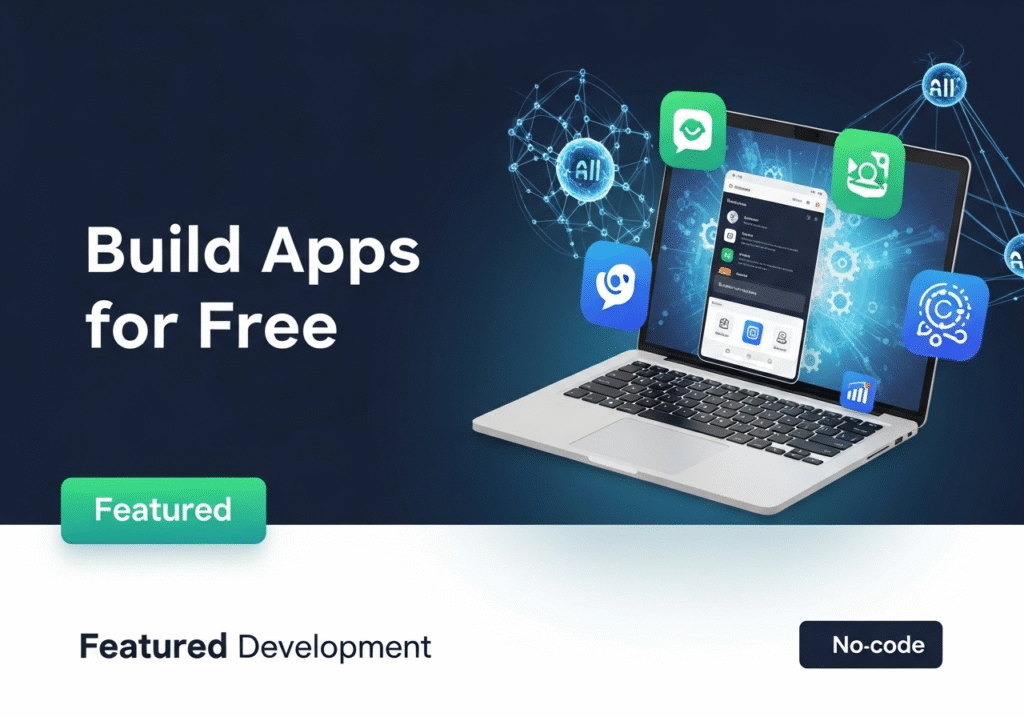
Hey there, business owners and website enthusiasts! What if I told you that you could skyrocket your website traffic by 10x in just 90 days—without spending a dime? Sounds too good to be true, right? Well, it’s not. Today, I’m spilling the beans on our proven, step-by-step process to unlock hidden traffic opportunities that most people don’t even know exist. Stick with me, and I’ll walk you through how to find keywords already ranking on page two of Google, optimize them to hit page one, and watch the clicks roll in. Plus, I’ll share some ChatGPT prompts that’ll make your life easier. Let’s dive in!
Why Page Two Is Your Goldmine
Did you know that the difference between ranking in position 10 and position 3 on Google is a 10x increase in clicks? According to a 2021 study by Backlinko, position 10 gets about 2-3% of clicks, while position 3 grabs 20-30% of the same searches. That’s a massive jump! Most websites are sitting on dozens of keywords already ranking on page two (positions 11-20) that just need a little TLC to climb higher. Instead of churning out new content and hoping it sticks, we’re going to optimize what’s already working. Here’s how.
Step 1: Find Low-Hanging Fruit with Google Search Console
The first stop is Google Search Console. If you don’t have it set up yet, stop reading and go do it—it’s free and gives you direct insight into what Google already knows about your site. Here’s what to do:
- Go to the Performance section and click on Pages.
- Add a filter for average position between 11 and 20. These are your low-hanging fruit—pages close to page one but not quite there.
- Export the data to see which pages and keywords are in this range.
Why focus on positions 11-20? Because moving from position 12 to 4 is way easier than ranking a brand-new page from scratch. Google already trusts these pages; they just need a boost.
Pro Tip for New Sites: No Search Console data yet? No problem. Use a free tool like Ubersuggest to analyze a competitor’s domain and find keywords they rank for in positions 11-20. You can also check Google’s “People Also Ask” or “Related Searches” at the bottom of search results for ideas.
Step 2: Cluster Keywords for Maximum Impact
Here’s where most people miss the mark. They find one keyword and optimize for that alone, leaving tons of traffic on the table. Instead, cluster related keywords to target multiple search terms with one page. For example, if your main keyword is “best coffee maker,” also target “top coffee machines,” “coffee maker reviews,” and “best value coffee maker.”
Here’s how to find keyword clusters:
- In Google Search Console, look at the Queries for a specific page to spot related terms you’re already ranking for.
- Check Google’s “People Also Ask” and “Related Searches” for more ideas.
- Use a spreadsheet to organize your main keyword and its variations.
Each keyword might only get 50-100 searches a month, but together, they could add up to 500-1,000 searches for a single piece of content. This works for e-commerce too—cluster terms like “red running shoes,” “crimson athletic shoes,” and “best running footwear” on one product page to capture more buying intent.
Step 3: The Three Kings Optimization Principle
This is the heart of the strategy, and I call it the Three Kings Principle. To signal to Google what your page is about, place your main keyword in these three spots:
- Title Tag: This shows up in search results (e.g., “Best Coffee Makers of 2025: Reviews & Top Picks”).
- H1 Tag: Your main headline (e.g., “The Best Coffee Makers for Every Budget”).
- First Sentence/Paragraph: Lead with your keyword naturally (e.g., “Looking for the best coffee maker to start your day right?”).
Weave your cluster keywords into H2, H3, and H4 subheadings and throughout the body content. Don’t worry about exact matches—natural variations like “top coffee makers” work just fine. Subheadings reinforce topical relevance, helping Google understand the full scope of your content.
Does it matter if I use exact keywords? No, as long as the variations are natural. Google’s algorithms, like BERT, understand context and synonyms better than ever.
Step 4: Nail Your On-Page Details
Now, let’s fine-tune the technical stuff. Here’s what to focus on:
- URL Structure: Include your main keyword (e.g., yoursite.com/best-coffee-maker-guide). Only change URLs for newer pages with few backlinks, and set up a 301 redirect if you do.
- Meta Description: Write a compelling 150-160 character description with your keyword cluster to boost click-through rates.
- Image Alt Text: Add keywords naturally to image descriptions without stuffing.
These tweaks make your page more appealing to both Google and users, which can indirectly boost rankings.
Step 5: Outperform Your Competition
To hit page one, you need to be better than the top three results. Search your main keyword, study the top-ranking pages, and ask:
- Is their content outdated? (E.g., still talking about 2019 trends?)
- Is the formatting clunky or hard to read?
- Are they missing visuals, data, or FAQs?
Use ChatGPT to analyze competitors with prompts like: “Analyze these competitor articles for [keyword] and tell me what’s missing, outdated, or how I can create better content.” Then, outdo them—write more words, add better visuals, include recent data, or answer questions they missed. For example, if they have 800 words, aim for 900. If they list five tips, give six.
Why do less-optimized sites sometimes rank higher? Rankings depend on over 200 factors, including backlinks, domain authority, and user engagement. But consistently creating better content sets you up for long-term success.
Step 6: Reindex and Track Progress
After optimizing, tell Google to re-crawl your page by requesting indexing in Google Search Console. This speeds up the process of Google noticing your changes. Don’t overdo it—reserve indexing requests for significant updates. Track progress for all your clustered keywords, not just the main one. You might rank for terms you didn’t directly target, which is a bonus!
Step 7: Troubleshoot When Results Stall
If your page isn’t climbing after 4-6 weeks, don’t panic. Run through this checklist:
- Page Speed: Use Google PageSpeed Insights to ensure your page loads in under 3 seconds on mobile.
- Internal Linking: Link to your optimized page from 3-5 other relevant pages on your site using your main keyword as anchor text.
- Indexing Issues: Check Google Search Console for crawl errors.
- Backlinks: In competitive niches, a few high-quality backlinks can give you the edge. Reach out to industry blogs or create shareable content to earn them.
Your Essential SEO Toolkit
You don’t need fancy software to make this work. Here’s what I recommend:
| Tool | Purpose | Cost |
|---|---|---|
| Google Search Console | Find low-hanging keywords and track performance | Free |
| Ubersuggest | Competitor keyword research | Free (basic version) |
| ChatGPT | Competitor analysis and content gap identification | Free (basic version) |
| Yoast or RankMath | On-page SEO optimization | Free (basic versions) |
These free tools get you 80% of the way there. If you want to go pro, invest in a paid SEO tool for deeper insights, but it’s not necessary to start seeing results.
Conclusion: Start Optimizing Today
This strategy isn’t just theory—it’s the exact process we use to deliver results for clients paying thousands a month. By focusing on low-hanging keywords, clustering related terms, and optimizing strategically, you can unlock free traffic that’s already within reach. The best part? You don’t need a big budget or fancy tools—just a little time and effort.
So, what page are you going to optimize first? Drop it in the comments below—I’d love to hear about it! And if you found this guide helpful, subscribe for more behind-the-scenes SEO tips. Try this strategy out, track your progress, and let me know how it goes. Here’s to 10xing your traffic in 90 days!


